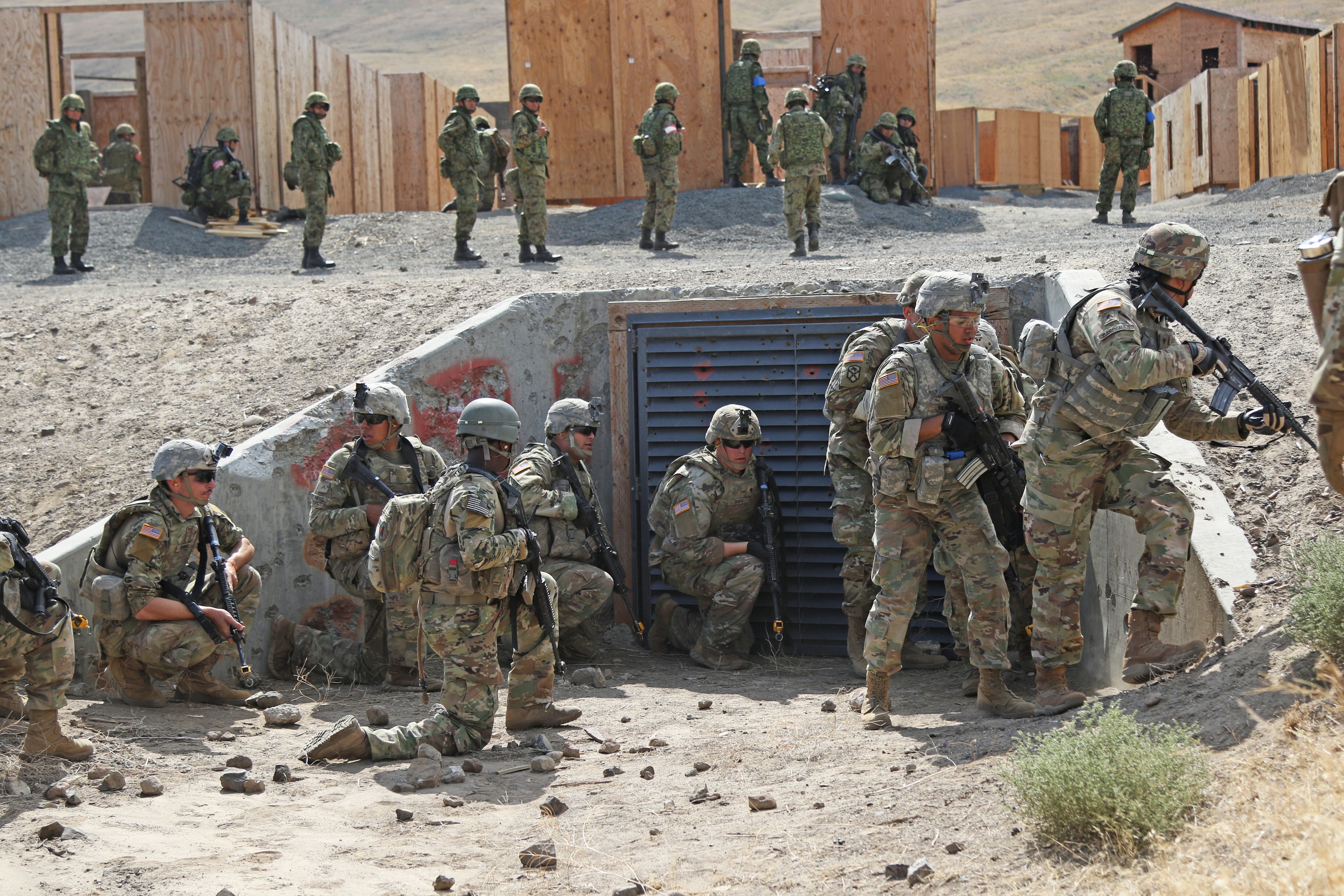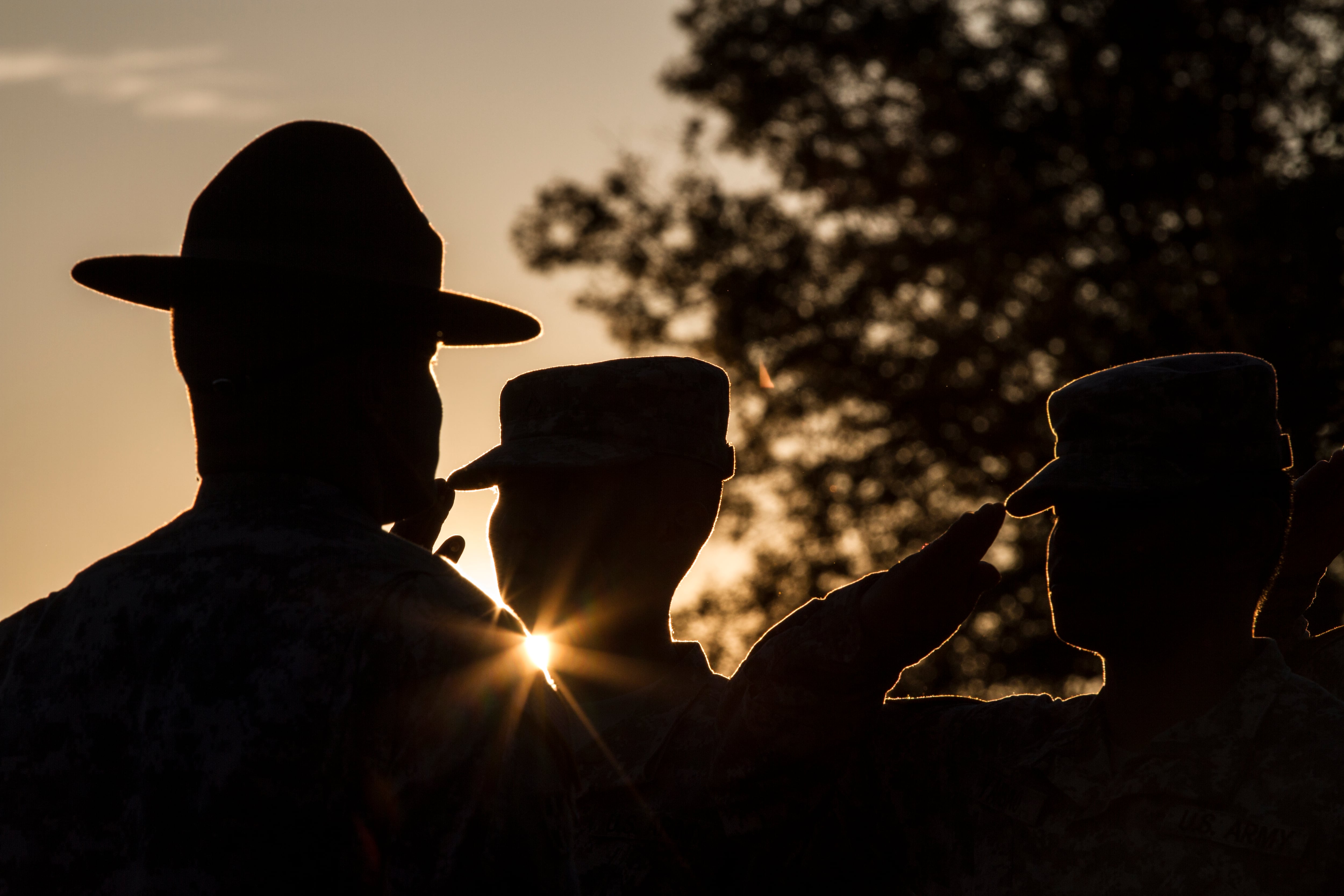If a major event happened in the United States or even overseas this year, the Army National Guard probably had a piece of it.
The Guard responded for overseas operations, hurricanes, wildfires and other disasters and multiple civil unrest scenarios that required quick-reaction forces to back up local police departments. All of that came, of course, in the midst and, of course, the unprecedented impact of the global pandemic COVID-19.
Leaders from key states and the commanding general of the Guard spoke Tuesday at the Association of the U.S. Army’s Annual Meeting and Exposition.
For the Guard members in and around New York, by most measures the epicenter of COVID-19′s early and ongoing strike on the U.S. population, their work started early and continues daily.
RELATED

Maj. Gen. Ray Shields, adjutant general of New York, referenced both the 9/11 attacks and Hurricane Sandy as points of major response for the state’s soldiers, but neither of those events compared to the Guard’s response to the COVID-19 pandemic, which has had “unprecedented scope and length.”
The Guard initially sent 200 soldiers to the New Rochelle suburb of New York City, but that quickly ramped up to 3,700 troops across the state, Shields said.
Those Guard members have been drawn from many units, the bulk of the work has been tasked to the 369th Sustainment Brigade and the 27th Infantry Combat Team, he said.
There have also been 3,600 active duty service members involved in the virus response in New York City since March, he said.
Between March and August, Guard members served 52 million meals in the city and another 2 million meals upstate.
They’ve staffed seven warehouses, handling 37 million pallets of supplies. They’ve even enlisted soldiers in running call centers, answering more than 278,000 calls regarding COVID needs.
Unique to COVID, as compared to 9/11 and Hurricane Sandy, the disaster was statewide and taxed resources across the area of operations, whereas 9/11 was isolated mostly to lower Manhattan and Sandy struck New York City and the Hudson Valley, along with coastlines in New York and New Jersey.
The most sobering duty the Guard has assisted with has been to handle and store bodies of those lost to COVID-19.
Shields said that Guard members have assisted the Office of the Chief Medical Examiner of New York City to recover 2,888 bodies of people who died in their homes in New York City.
At the same time, soldiers have assembled and shipped more than 2.5 million COVID-19 test kits and conducted 535,000 COVID tests and counting, he said.
In the midst of the COVID-19 crisis, California and Oregon saw the worst wildfire season since 2003 and deployed more than 2,000 Guard soldiers to fight them there and in nearby states, said Maj. Gen. Matthew Beevers, assistant adjutant general of the California National Guard.
The fires consumed more than 3 million acres, an area the size of Connecticut. Troops have evacuated 27,000 residents and pulled in assets that included more than 15 helicopters, four C-130 cargo planes that have run 184 sorties, dropping 4.81 million gallons of water on targets.
But beyond battling the immense fires, they’ve used an entire squadron of drones, which logged more than 1,159 flight hours, to monitor the initiation and spread of wildfires, mapping 27 blazes across the state, he said.
A space team has also used space-based assets to detect 22 new fire starts that could not have been detected by other means, Beevers said.
While all this was going on, the COVID-19 pandemic cost the Guard 19,000 school seats for training sessions that were cancelled and three of their four Combat Training Center rotations were cancelled, said. Lt. Gen. Jon Jensen, director of the Army National Guard.
An ongoing border security mission in Texas pulled in 1,700 troops over the past year, down from a height of 2,100 since the current mission began in 2018, said Maj. Gen. Tracy Norris, adjutant general of the Texas National Guard.
During that ongoing mission, the Texas Army Guard also sent 1,000 soldiers for hurricane relief operations and another 1,300 soldiers to support overseas operations, she said.
Viruses, fires and hurricanes weren’t the only challenges Guard members faced.
In Wisconsin, Guard members were called up on at least five mobilizations in response to civil unrest. Three took place following the police-involved death of George Floyd, which saw mobilizations in Milwaukee, Madison, Racine and Kenosha in the days following his death, said Air Force Maj. Gen. Paul Knapp, Wisconsin National Guard adjutant general. Then in June, protests again in Madison resulted in a Guard response.
In late August, following the police-involved shooting death of Jacob Blake in Kenosha, a quick reaction force of 125 soldiers was sent at the request of the governor and local police. That force grew to 1,000 within a few days, and later to 2,000 troops; 1,300 were from Wisconsin units and the remaining soldiers from units out of Michigan, Alabama and Arizona, Knapp said.
As these events unfolded, units such as the Minnesota Army National Guard’s 1st Armored Brigade Combat Team, 34th Infantry Division, continued through their National Training Center rotations. The 1st ABCT’s ,preparations were somewhat limited because, just as they had completed company-level preparations and returned home, COVID-19 struck.
Col. Timothy Kemp, head of the 1st ABCT, and other commanders had to coordinate moving 5,000 soldiers from 20 states, following individual state requirements for COVID-19 precautions. They used mobile testing labs in both Minnesota and at a gathering point at Fort Knox, Kentucky.
Those soldiers were tested and screened for 14 days prior to movement to Fort Irwin, California, for training. Then tested again upon arrival, Kemp said.
Todd South has written about crime, courts, government and the military for multiple publications since 2004 and was named a 2014 Pulitzer finalist for a co-written project on witness intimidation. Todd is a Marine veteran of the Iraq War.





